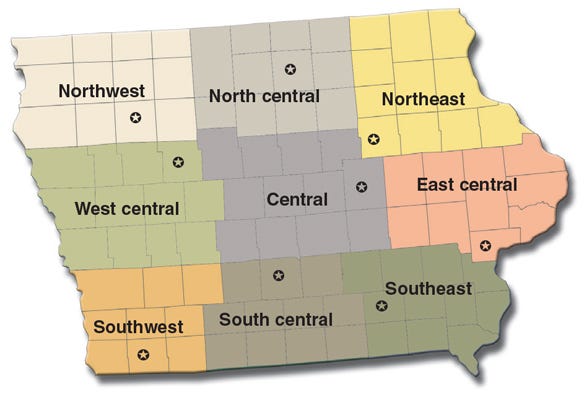September 18, 2020

Throughout 2020, there have been some prominent themes in Midwest agriculture. One is the importance of flexibility, or the lack thereof, that can cause marketplace harm. Case in point, consider the pain experienced across the livestock sector early this year when supply and demand became severely misaligned. Meat counters and grocery store shelves were almost empty, while at the same time we saw videos of milk being dumped and heard stories of animals being euthanized.
Rather than there being apparent shortages, we learned staffing complications on the other end of the supply chain due to coronavirus-related issues limited processing capacities. Elsewhere, consider the ethanol sector, which experienced huge losses when gasoline demand — and therefore ethanol demand — dropped. No one saw the tables for demand, in either of these sectors, being turned on their heads. Flexibility was needed, and when it was not available, the results were painful.
Expecting the unexpected
Another theme this year that many of us have come to grips with is our lack of control. I was reminded of this reality in August every time I looked at the U.S. Drought Monitor maps or when I took a drive across east-central Iowa and observed the millions of acres of crop damage and destruction from the Aug. 10 derecho. Unbelievable. And there was really nothing we could do to impact what had happened.
However, we are not powerless. We can prepare ourselves (and our businesses) for these seemingly unforeseeable events. Come to expect the unexpected, as they say. Which points to one of the major positive themes of 2020: The amazing resilience of Iowa and Midwest agriculture.
If you would have asked me back in January about the major concerns I had for our country and our ag industry, neither a “global pandemic” nor an “inland hurricane” would have made my top 10 concerns. But both occurred. And while both events have been painful, the people I work with across agriculture are focused on what they can do, instead of being focused on what they cannot.
Stability still theme
Specifically relating to the Iowa and Midwest farmland market, the theme of 2020 seems to be stability. Back in March when COVID-19 first shut down most of the nation, there was concern that the rough waves being felt across the general economy would spill over and create wobbly legs for the farmland market. Thus far, however, that hasn’t happened.
Low interest rates, continued government support for agriculture and a slim inventory of available farms for sale have all helped to support stable price levels. Given all the instability elsewhere, stable farmland prices seem improbable. But recent sales (see below) are a testament to stability in the market. People still favor owning farmland. And in a year like 2020 when stability is in short supply, Iowa and Midwest farmland has delivered.

Northwest
Buena Vista County. North of Newell, 80 acres sold at public auction for $9,600 per acre. The farm has 79 tillable acres with an 87.7 CSR2, which equals $111 per CSR2 point on the tillable acres.
North Central
Cerro Gordo County. Near Swaledale, 80 acres sold at public auction for $6,250 per acre. The farm has 79 tillable acres with a 65.7 CSR2, which equals $96 per CSR2 point on the tillable acres.
Northeast
Black Hawk County. West of Cedar Falls, 45 acres sold for $9,832 per acre. The farm consists of 43 tillable acres with an 84 CSR2, which equals $122 per CSR2 point on the tillable acres.
West Central
Calhoun County. Southwest of Lake City, 116 acres sold at public auction for $10,800 per acre. The farm has 111 tillable acres with an 87.5 CSR2, which equals $129 per CSR2 point on the tillable acres.
Central
Tama County. Northwest of Clutier, 40 acres sold at public auction for $11,000 per acre. The farm consists of 38 tillable acres with a 91.0 CSR2, which equals $127 per CSR2 point on the tillable acres.
East Central
Muscatine County. Southwest of Walcott, 146 acres sold for $11,125 per acre. The farm has 144 tillable acres with an 89.3 CSR2, which equals $126 per CSR2 point on the tillable acres.
Southwest
Page County. Southeast of Clarinda, 160 acres sold for $6,375 per acre. The farm consists of 155 tillable acres with a 69.8 CSR2, which equals $94 per CSR2 point on the tillable acres.
South Central
Warren County. West of Indianola, 77 acres sold at public auction for $11,000 per acre. The farm has 70-cropped acres with an 84.2 CSR2, which equals $144 per CSR2 point on the tillable acres.
Southeast
Wapello County. Northeast of Ottumwa, 140 acres sold for $3,325 per acre. This recreational farm has 66 tillable acres, with a 58.3 CSR2 and the balance of the farm (74 acres) is in timber.
Hensley, president of Hertz Real Estate Services, compiled this list but did not handle all sales. Visit hertz.ag.
About the Author(s)
You May Also Like






